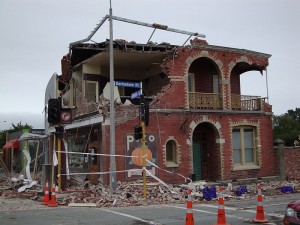‘Reinsurance Moving To Seller’s Market’
 Standard & Poor’s Ratings Services said that the Christchurch earthquake places further downward pressure on the earnings of the general insurers in New Zealand. However, the capital strength and extensive reinsurance protection of major general insurers provided by Bermuda and other international carriers would likely limit negative rating pressure at this stage.
Standard & Poor’s Ratings Services said that the Christchurch earthquake places further downward pressure on the earnings of the general insurers in New Zealand. However, the capital strength and extensive reinsurance protection of major general insurers provided by Bermuda and other international carriers would likely limit negative rating pressure at this stage.
Still, despite limited exposure to the New Zealand calamity, shares in US-listed reinsurers either based in Bermuda or with strong presences here fell for a second day on Wednesday as a result of the quake.
In early New York Stock Exchange trading ACE Ltd. shares fell 0.6 percent, XL Group dropped 0.7 percent, PartnerRe Ltd. dipped 0.3 percent and Everest Re Group Ltd. was down 0.7 percent. The broader S&P insurance index was down 0.2 percent.
S&P said the scale of the event in terms of loss of life and damage to property in a significant urbanised centre –- Christchurch is New Zealand’s second-largest city -– is unprecedented for the region in recent times.
While still very early to accurately assess, Standard & Poors said it would expect the insurance loss to far exceed that of the September, 2010 Christchurch earthquake, which currently stands at around $5 billion, and add to the general insurers’ recent major flood losses in Australia.
Major insurers have already released guidance around exposure to the event and earnings impact, which while modest, does contribute to ongoing lackluster earnings for the sector.
Australia’s Suncorp Group Ltd. and core operating subsidiaries including Vero Insurance New Zealand Ltd., has advised of reinsurance cover to limit its New Zealand exposure to NZ$60 million, while Insurance Australia Group Ltd. has advised of reinsurance cover to limit exposure to A$40 million. In both cases, however, the earnings outlook has deteriorated through claims cost and significant cost to reinstate reinsurance cover.
Despite earnings pressure, the ratings remain supported by the general insurers’ capital strength, reserve adequacy and reinsurance protection, although the frequency and scale of these catastrophe events has eroded some financial flexibility at the current rating level.
Key exposures will be borne by the New Zealand Earthquake Commission, which will meet the first NZ$1.5 billion of its eligible residential exposure, with substantial reinsurance protection beyond that. Additionally, major global reinsurance players will bear the majority of insured exposure to the event.
In its ongoing assessment of the Australian and New Zealand general insurance industry, Standard & Poor’s will consider the claims cost and reinsurance cost of these events, offset against the material upward premium-rate pressure, especially in personal lines, which may contribute to improved underlying earnings. S&P said it will also assess the availability and cost of reinsurance protection in future.
“Reinsurance capacity has been ample in recent years, but we are now moving from a buyers’ to a sellers’ market, in view of these catastrophic events,” said S&P. “As a result, the cost and availability of reinsurance cover may not be as attractive as before.”

